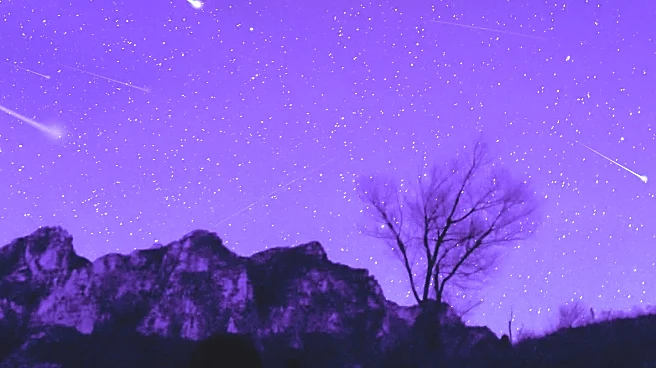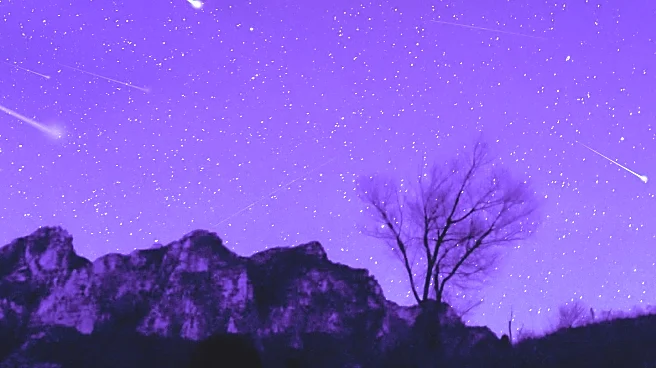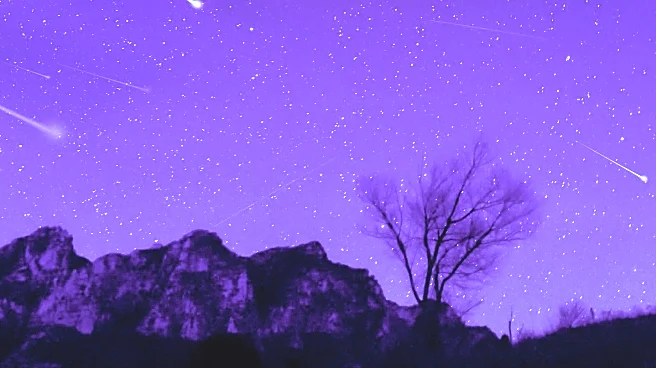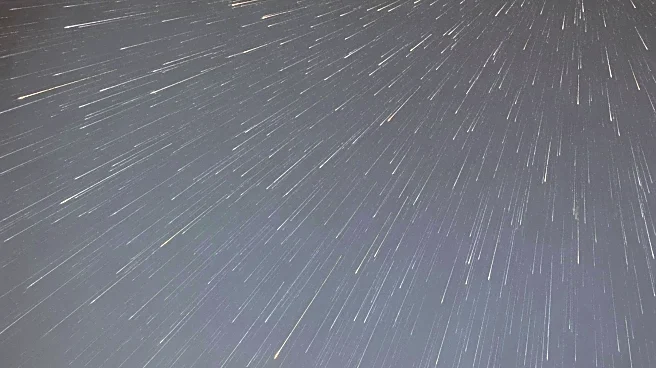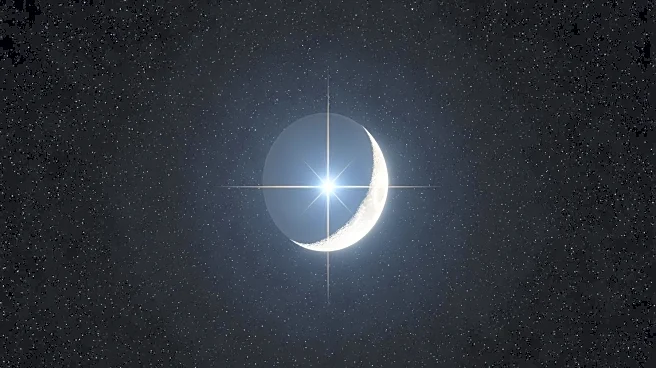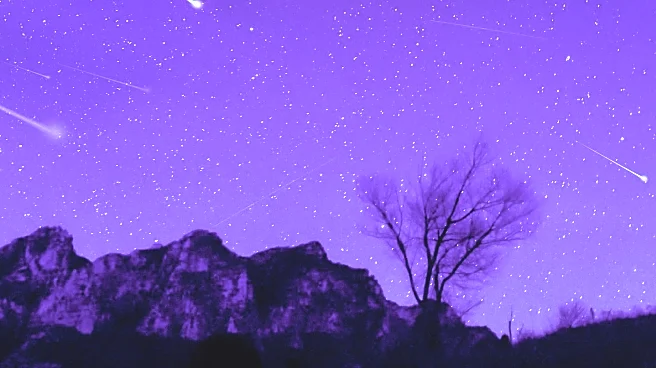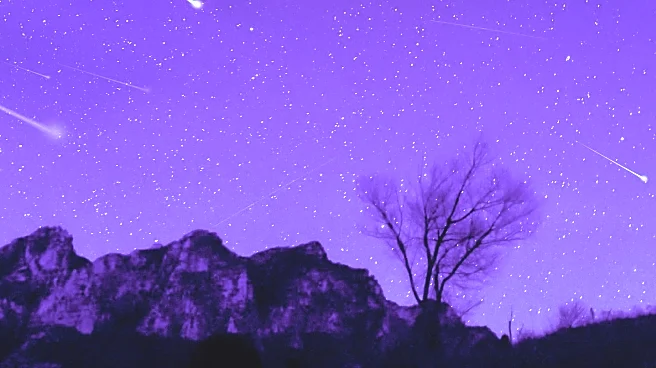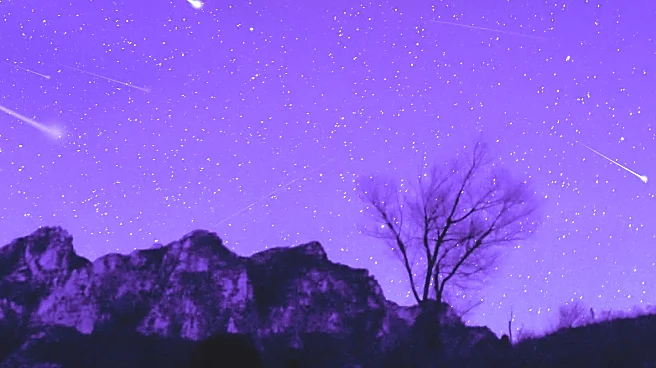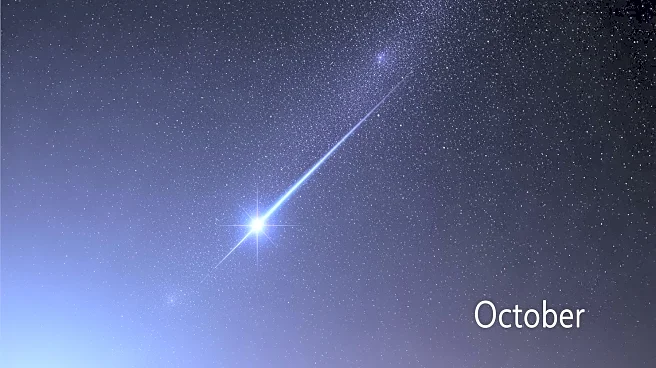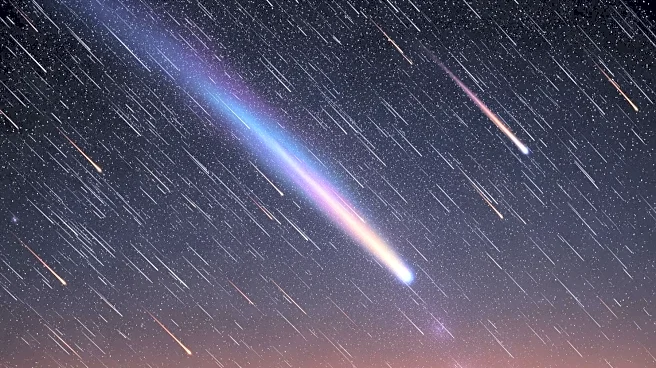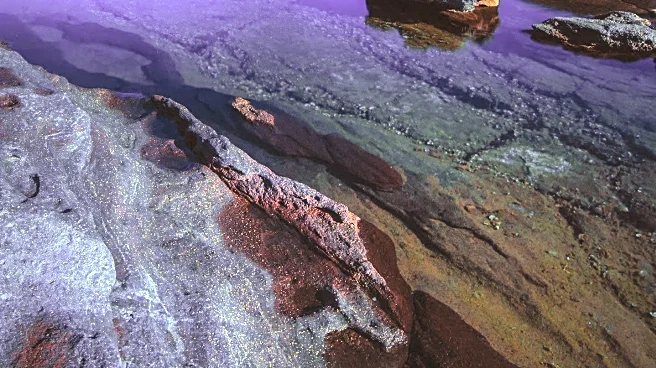What's Happening?
The Orionid meteor shower, an annual event originating from debris of Halley's Comet, is peaking in Texas on October 20-23. This year, the shower coincides with a new moon, providing dark skies for optimal
viewing. Up to 20 meteors per hour can be seen, with the best viewing times between midnight and dawn. The meteors appear to originate from the Orion constellation, traveling at speeds of 41 miles per second.
Why It's Important?
The Orionid meteor shower offers a chance for Texans to engage with astronomy and appreciate natural phenomena. Such events can foster community interest in science and the environment, potentially influencing educational programs and public awareness. The shower's visibility during a new moon enhances the experience, making it a prime opportunity for both amateur and professional astronomers to study meteor activity.
What's Next?
As the meteor shower continues through November 7, Texans are advised to find dark viewing spots away from city lights for the best experience. The weather forecast suggests partly clear skies during peak viewing times, although cloud cover may increase later. Observers should prepare by allowing their eyes to adjust to the darkness and avoiding bright lights.
Beyond the Headlines
The meteor shower may spark discussions on the significance of preserving dark skies and reducing light pollution. Such initiatives can benefit both ecological systems and human health, promoting sustainable practices in urban planning and community development.
